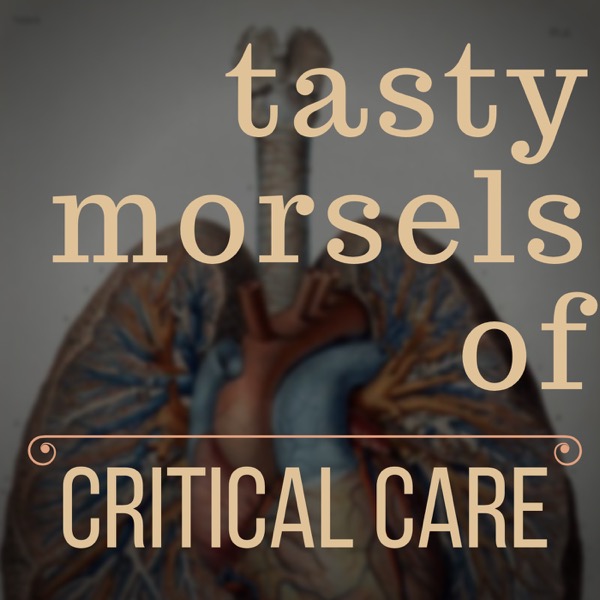Tasty Morsels of Critical Care 076 | VV ECMO
Tasty Morsels of Critical Care - A podcast by Andy Neill - Mondays

Welcome back to the tasty morsels of critical care podcast. Today we’ll talk about one of the niche and shall I say “advanced” in inverted commas therapies in intensive care practice. ECMO. And to be precise we’ll be talking about VV ECMO. Indeed saying that you are “putting someone on ECMO” is a woefully incomplete sentence as the support and physiological difference between venovenous ECMO and venoarterial ECMO is really rather profound. The post will be an intentionally broad description of the therapy and perhaps less on the nuances of managing a patient on VV ECMO, as at fellowship exam level I suspect you’d only be expected to have an overview of what it it is, what it can (and can’t do) and when to ask for it. I acknowledge the glaring gaps in the post and the likely criminal omission of the oxygen carrying capacity calculation. It would be fair to call this an idiot’s guide. And given that these posts are generated from my own notes then we all know who the idiot in that title it refers to is. We’ll start at its simplest level, which is how i try to describe to friends and non medical people about how ECMO works. Blood is removed from the veins in one pipe and put through an artificial lung type device where CO2 is removed and Oxygen added, then blood is returned to the veins via a second pipe. If you’re lungs don’t work so well then the device can replace a lot of their function in the short term. Lay person explanation ends. The degree to which we can replace lung function, primarily the degree to which we can oxygenate, is determined by the amount of the venous return coming back to the heart we can divert through the machine. Let’s say the cardiac output is a healthy 5L/min. That means that 5L/min is being ejected from the left ventricle and 5L/min is returning to the right ventricle. If the lungs aren’t working well then we need to capture at least 60% or so of this venous return and stick it through the oxygenator in order to maintain tolerable saturation of haemoglobin with oxygen. So in our example we’ll have to be siphoning off at least 3L/min from the venous return, putting it through the oxygenator and returning it back to the right side of the heart. With me so far? It is at this stage that we immediately run into one of the physics challenges of VV ECMO. Pulling off 3L/min of blood requires pipes of substantial diameter. Typically these are in the 23 to 27Fr range. (ie 8-9mm internal diameter). You want to place this drainage pipe somewhere where there is a high flow of blood in a large vessel capable of accommodating it. Typically this will be in the SVC or the IVC, typically reached by an insertion point in the IJ or femoral vein respectively. It becomes really quite tricky to drain more than 3L/min of blood (or 60% of the venous return) with a single pipe as you can really only drain either the SVC (venous return from the upper body) or the IVC (venous return from the lower body) and as should be obvious the venous return from the body is split between these. In addition to the limitations of the physical size of the pipes you have to remember that the vessels within which these pipes are placed are not rigid fixed stented things, they dilate and contract in response to intravascular volume and intravascular tone. If you try to suck blood out of them with too much negative pressure the vessels will collapse around the pipe blocking all the holes and stopping all drainage. All this to say that oxygenation is determined by the proportion of venous return we can divert through the ECMO machine. And capturing that venous return should be the priority when it comes to deciding on drainage pipe size and placement. once the blood is out of the body and through the oxygenator it turns out that it’s quite east t...
